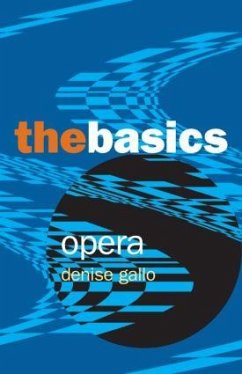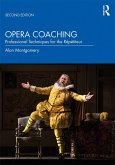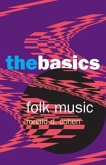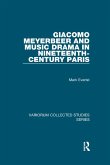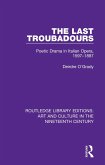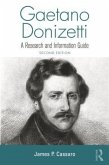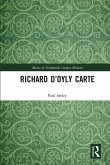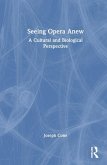- Broschiertes Buch
- Merkliste
- Auf die Merkliste
- Bewerten Bewerten
- Teilen
- Produkt teilen
- Produkterinnerung
- Produkterinnerung
This introduction explores opera's origins, terminology and genres over the past four centuries.
Andere Kunden interessierten sich auch für
![Opera Coaching Opera Coaching]() Alan MontgomeryOpera Coaching42,99 €
Alan MontgomeryOpera Coaching42,99 €![Folk Music Folk Music]() Ronald CohenFolk Music30,99 €
Ronald CohenFolk Music30,99 €![Giacomo Meyerbeer and Music Drama in Nineteenth-Century Paris Giacomo Meyerbeer and Music Drama in Nineteenth-Century Paris]() Mark EveristGiacomo Meyerbeer and Music Drama in Nineteenth-Century Paris55,99 €
Mark EveristGiacomo Meyerbeer and Music Drama in Nineteenth-Century Paris55,99 €![The Last Troubadours The Last Troubadours]() Deirdre O'GradyThe Last Troubadours36,99 €
Deirdre O'GradyThe Last Troubadours36,99 €![Gaetano Donizetti Gaetano Donizetti]() James P. CassaroGaetano Donizetti51,99 €
James P. CassaroGaetano Donizetti51,99 €![Richard D'Oyly Carte Richard D'Oyly Carte]() Paul SeeleyRichard D'Oyly Carte59,99 €
Paul SeeleyRichard D'Oyly Carte59,99 €![Seeing Opera Anew Seeing Opera Anew]() Joseph ConeSeeing Opera Anew152,99 €
Joseph ConeSeeing Opera Anew152,99 €-
-
-
This introduction explores opera's origins, terminology and genres over the past four centuries.
Hinweis: Dieser Artikel kann nur an eine deutsche Lieferadresse ausgeliefert werden.
Hinweis: Dieser Artikel kann nur an eine deutsche Lieferadresse ausgeliefert werden.
Produktdetails
- Produktdetails
- The Basics
- Verlag: Routledge / Taylor & Francis
- Artikelnr. des Verlages: RT4451
- Seitenzahl: 224
- Erscheinungstermin: 22. November 2005
- Englisch
- Abmessung: 198mm x 129mm x 12mm
- Gewicht: 272g
- ISBN-13: 9780415970723
- ISBN-10: 0415970725
- Artikelnr.: 20885994
- Herstellerkennzeichnung
- Libri GmbH
- Europaallee 1
- 36244 Bad Hersfeld
- gpsr@libri.de
- The Basics
- Verlag: Routledge / Taylor & Francis
- Artikelnr. des Verlages: RT4451
- Seitenzahl: 224
- Erscheinungstermin: 22. November 2005
- Englisch
- Abmessung: 198mm x 129mm x 12mm
- Gewicht: 272g
- ISBN-13: 9780415970723
- ISBN-10: 0415970725
- Artikelnr.: 20885994
- Herstellerkennzeichnung
- Libri GmbH
- Europaallee 1
- 36244 Bad Hersfeld
- gpsr@libri.de
Denise Gallo is a Music Specialist at The Library of Congress. Previously, she was an Assistant Professor and Co-Director of the Music History Division at The Catholic University of America, where she now remains an adjunct professor. She is a frequent lecturer for Washington Opera, the Baltimore Opera Company, Washington Concert Opera, and Summer Opera Theatre Company, and a contributing author to The Washington Opera Magazine and the Baltimore Opera Subscribers' Study Guide. Gallo is the author of several books, including Rossini: A Guideto Research (Routledge)
IntroductionPart I Terms and Topics 1. Origins of OperaThe ultimate Baroque expression Baroque CharacteristicsThe Florentine Camerata: Opera's First TheoristsFrom Polyphony to Monody: Solo SongMonody as Recitative Opera's forerunnersThe IntermedioLearned Comedy (Commedia erudite) Italian Folk Comedy (Commedia dell'arte)Pastoral DramaChurch pageants (Sacre Rappresentazioni)Sidebar: Claudio MonteverdiSummaryTerminologyAria StrophicThrough-composedDa capoDal segnoCavatina CantabileCabalettaRecitativeThe rhythm of languageDry (secco)Accompanied (accompagnato)SimpleMesuréeEnsemblesDuets and triosQuartets and larger ensemblesScenaMultipartite finalesVocal ranges (with sample roles)Musical Scores and EditionsAutographs/holographsFull orchestralPiano-vocalIndividual selectionsScholarly editionsPerforming editionsSummary2. Music and Text RelationshipsThe librettoPoetry and musical structuresCompositional strategiesSubjects, themes, and musical expressionSummary3. Opera in TheatersPatronagePublic TheatersEconomics of operaHistoric HousesSummary4. History of Opera on Media RecordingsOpera on musical boxesThe earliest recordingsOpera on LPs and CDsOperas on video and DVDFilm versionsSummary5. ProfessionsComposersLibrettistsSingersThe ImpresarioConductors and DirectorsMusicians and DancersCriticsSummary6. Opera as a Mirror of Culture and SocietyCultural ExpressionOpera as class symbolOperatic seasons and societyCensorshipOpera and religionGender politics NationalismThe Role of the AudienceSummaryPART IIGenres and Styles7. Serious OperaOpera seriaTragedie lyriqueOpéra comiqueMusic drama and GesamptkunstwerkSummary8. Comic OperaOpera buffaFarsaIntermezzoDramma giocosoOpéra comiqueOpéra bouffeSummary9. Semi-serious OperaOpera semiseriaOperettaSummary10. Vernacular OperaSingspielZarzuelaSemi-operaBallad operaSummary
IntroductionPart I Terms and Topics 1. Origins of OperaThe ultimate Baroque expression Baroque CharacteristicsThe Florentine Camerata: Opera's First TheoristsFrom Polyphony to Monody: Solo SongMonody as Recitative Opera's forerunnersThe IntermedioLearned Comedy (Commedia erudite) Italian Folk Comedy (Commedia dell'arte)Pastoral DramaChurch pageants (Sacre Rappresentazioni)Sidebar: Claudio MonteverdiSummaryTerminologyAria StrophicThrough-composedDa capoDal segnoCavatina CantabileCabalettaRecitativeThe rhythm of languageDry (secco)Accompanied (accompagnato)SimpleMesuréeEnsemblesDuets and triosQuartets and larger ensemblesScenaMultipartite finalesVocal ranges (with sample roles)Musical Scores and EditionsAutographs/holographsFull orchestralPiano-vocalIndividual selectionsScholarly editionsPerforming editionsSummary2. Music and Text RelationshipsThe librettoPoetry and musical structuresCompositional strategiesSubjects, themes, and musical expressionSummary3. Opera in TheatersPatronagePublic TheatersEconomics of operaHistoric HousesSummary4. History of Opera on Media RecordingsOpera on musical boxesThe earliest recordingsOpera on LPs and CDsOperas on video and DVDFilm versionsSummary5. ProfessionsComposersLibrettistsSingersThe ImpresarioConductors and DirectorsMusicians and DancersCriticsSummary6. Opera as a Mirror of Culture and SocietyCultural ExpressionOpera as class symbolOperatic seasons and societyCensorshipOpera and religionGender politics NationalismThe Role of the AudienceSummaryPART IIGenres and Styles7. Serious OperaOpera seriaTragedie lyriqueOpéra comiqueMusic drama and GesamptkunstwerkSummary8. Comic OperaOpera buffaFarsaIntermezzoDramma giocosoOpéra comiqueOpéra bouffeSummary9. Semi-serious OperaOpera semiseriaOperettaSummary10. Vernacular OperaSingspielZarzuelaSemi-operaBallad operaSummary

